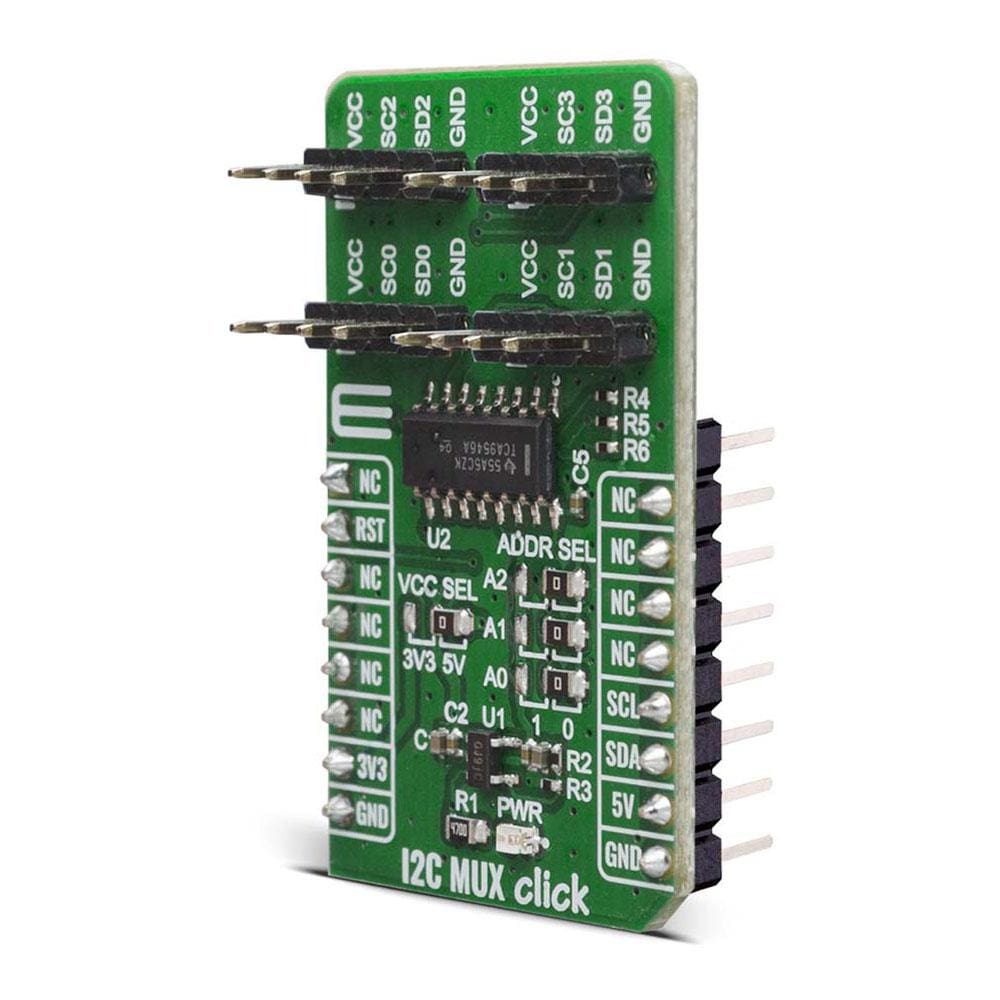
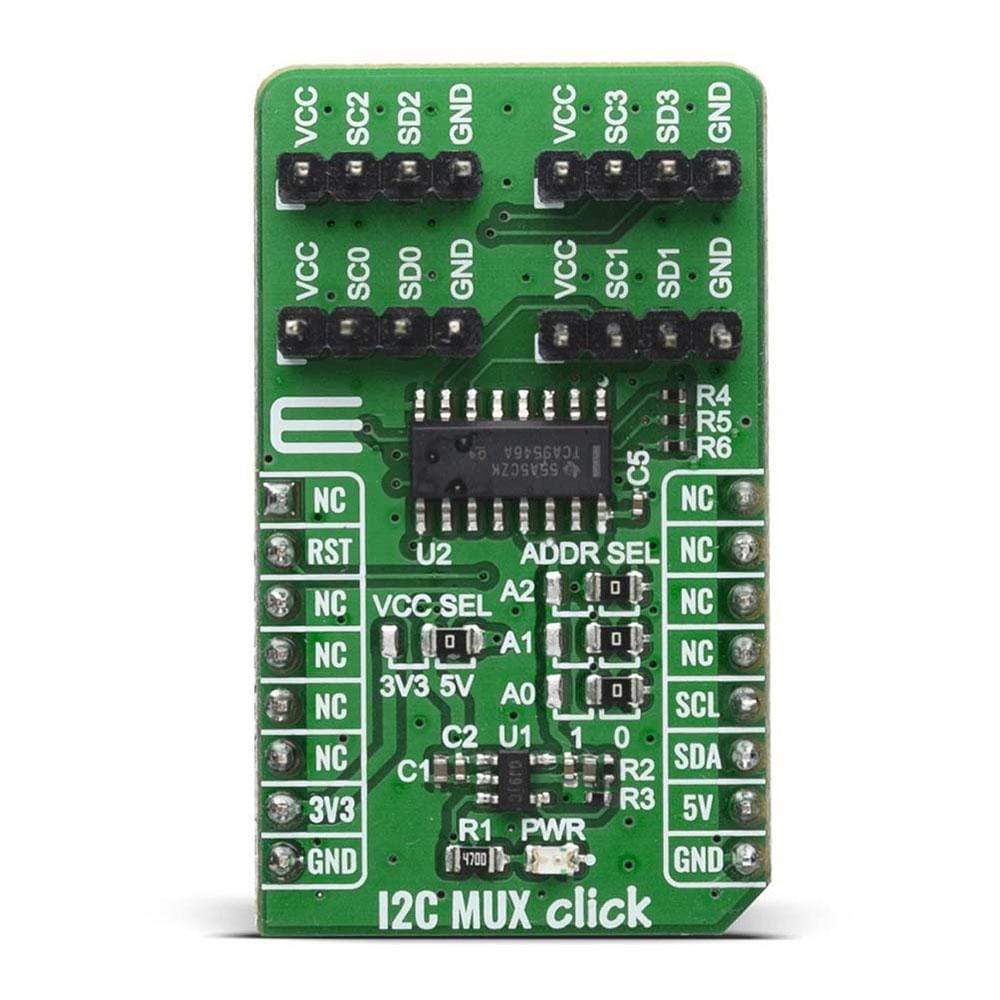
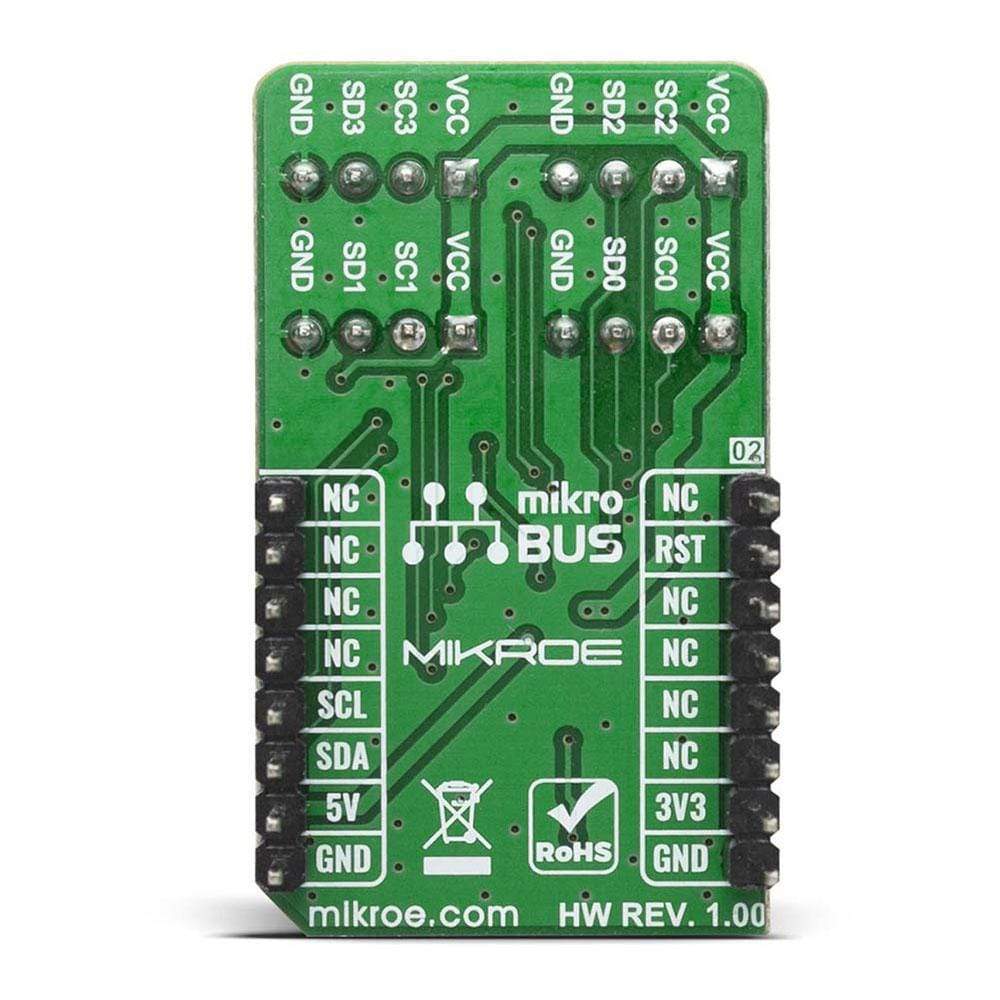
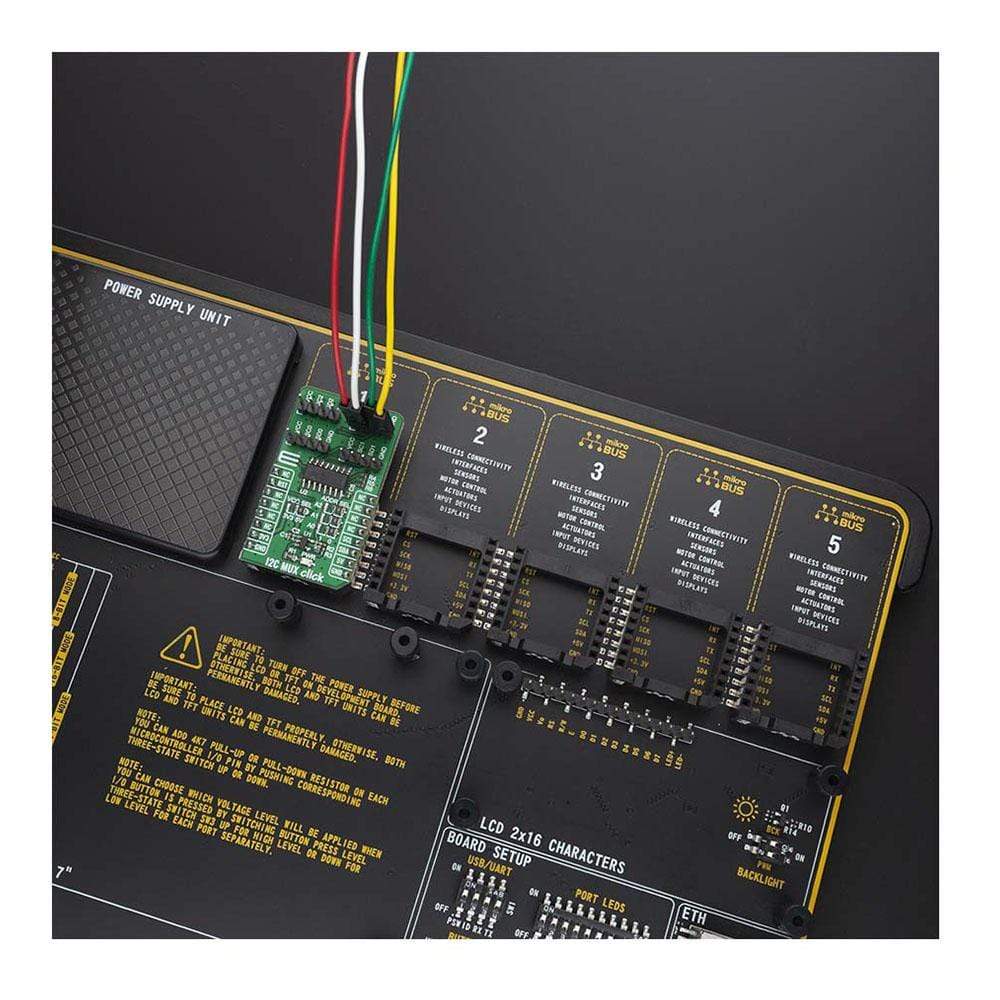
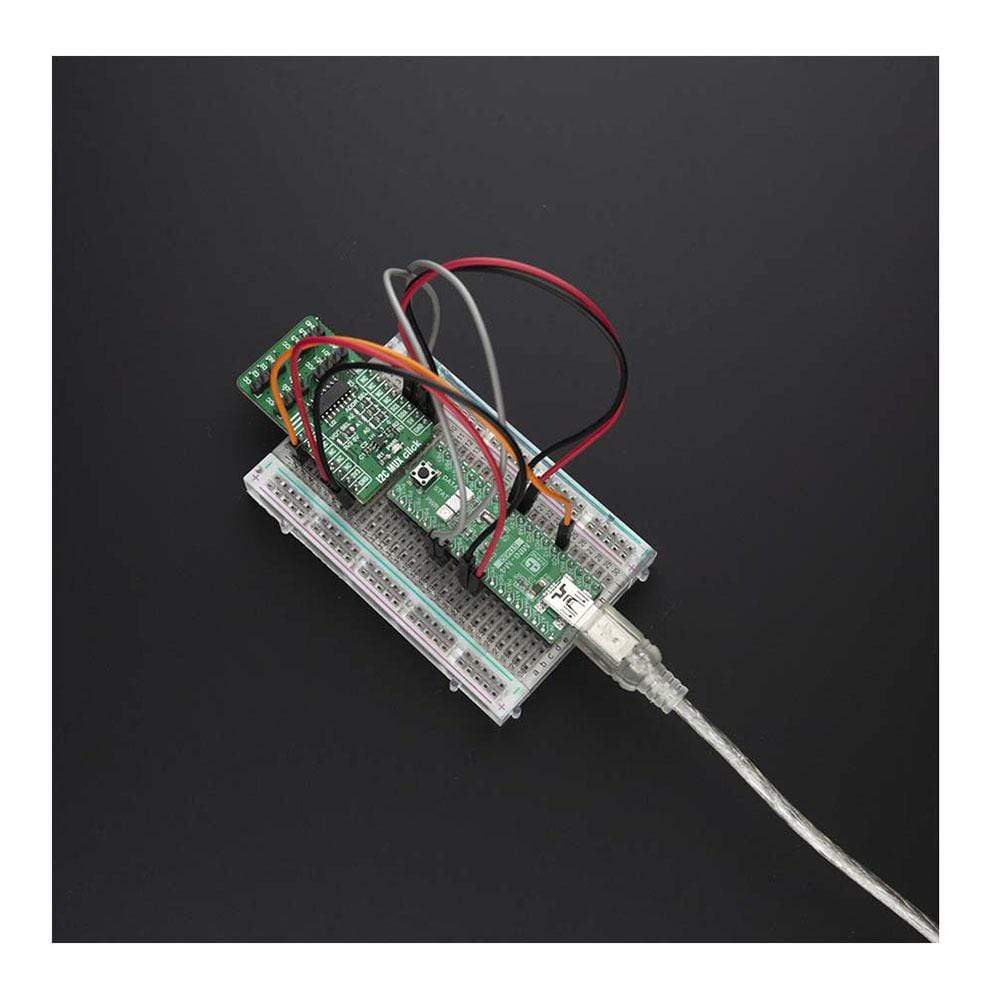
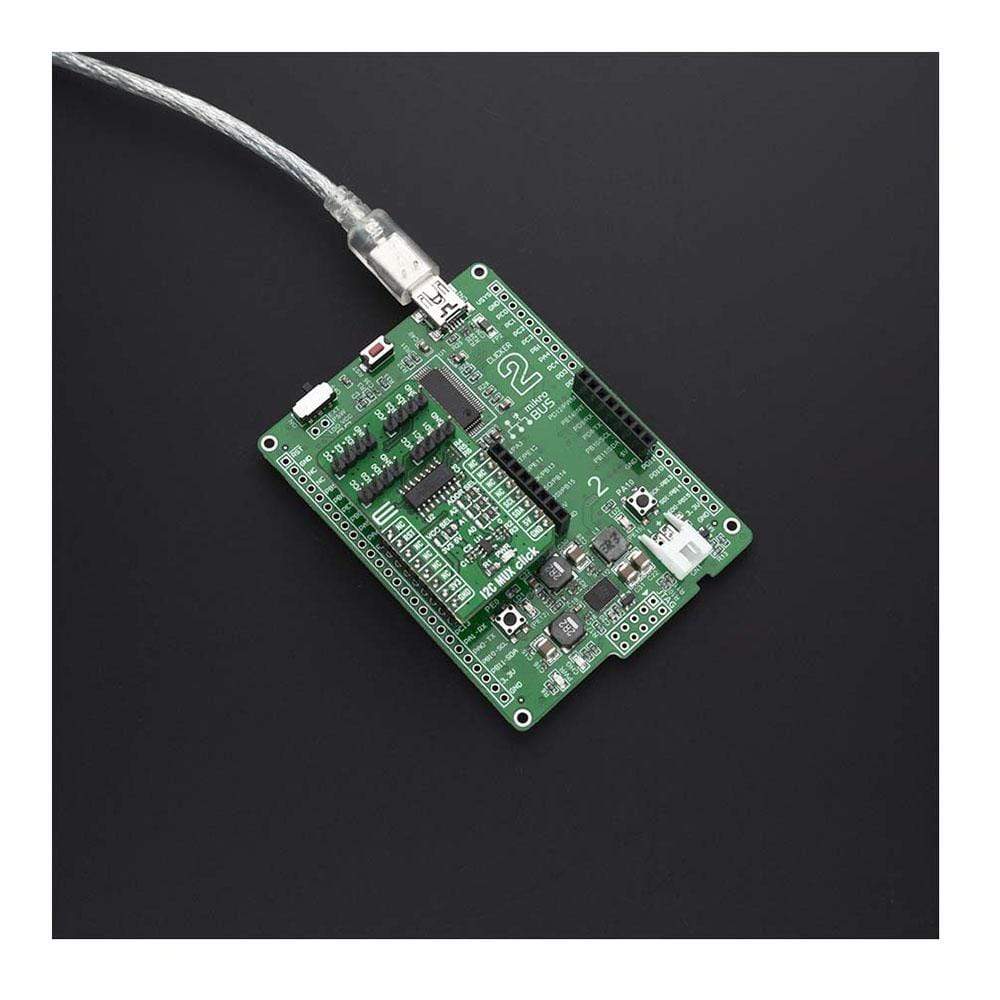
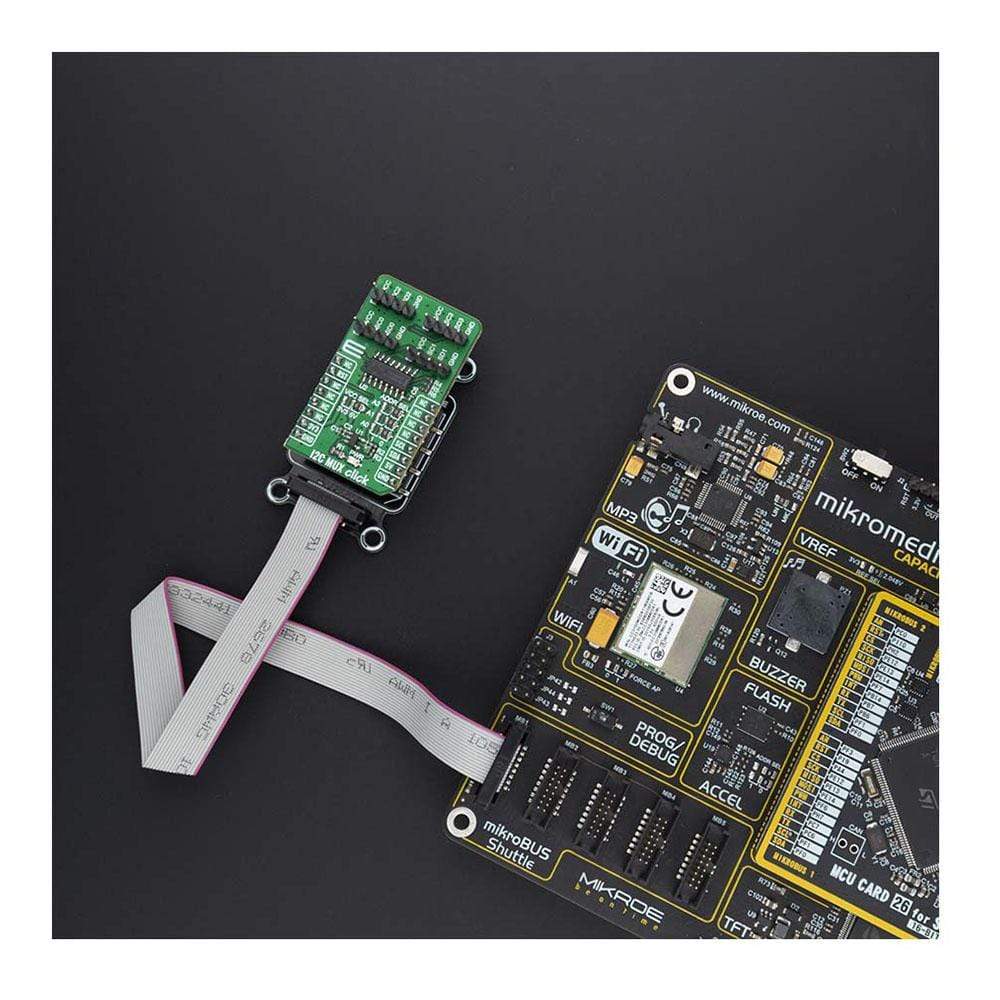
Overview
The I2C MUX Click Board™ is a quad bidirectional translating I2C and SMBus switch with reset function, intended for applications with I2C slave address conflicts (multiple, identical temp sensors). It features a quad bidirectional translating switch controlled via the I2C bus, labelled as TCA9546A from Texas Instruments. Click Board™ has three address jumpers, allowing up to eight TCA9546A devices on the same bus.
The I2C MUX Click Board™ allows voltage translation between 1.8V, 2.5V, 3.3V, and 5V buses, and also supports hot insertion. The TCA9546A can work on a 0 - 400 kHz clock frequency range and is ideal for communication with numerous devices that share the identical slave address on the same bus.
Downloads
Le I2C MUX Click Board™ est un commutateur I2C et SMBus bidirectionnel quadruple avec fonction de réinitialisation, destiné aux applications avec conflits d'adresses d'esclaves I2C (plusieurs capteurs de température identiques). Il est doté d'un commutateur de traduction bidirectionnel quadruple contrôlé via le bus I2C, étiqueté TCA9546A de Texas Instruments. Click Board™ possède trois cavaliers d'adresse, permettant jusqu'à huit périphériques TCA9546A sur le même bus.
La carte I2C MUX Click Board™ permet la conversion de tension entre les bus 1,8 V, 2,5 V, 3,3 V et 5 V, et prend également en charge l'insertion à chaud. Le TCA9546A peut fonctionner sur une plage de fréquences d'horloge de 0 à 400 kHz et est idéal pour la communication avec de nombreux appareils qui partagent la même adresse esclave sur le même bus.
| General Information | |
|---|---|
Part Number (SKU) |
MIKROE-4048
|
Manufacturer |
|
| Physical and Mechanical | |
Weight |
0.021 kg
|
| Other | |
Country of Origin |
|
HS Code Customs Tariff code
|
|
EAN |
8606018717125
|
Warranty |
|
Frequently Asked Questions
Have a Question?
Be the first to ask a question about this.







